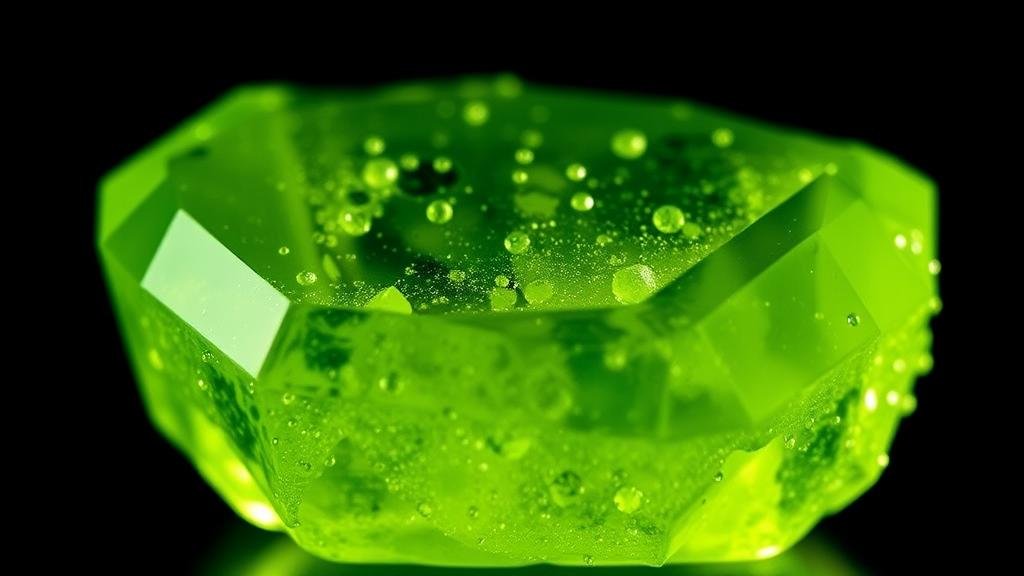The Glow of Peridot: Unearthing Nature’s Olivine Treasures
The Glow of Peridot: Unearthing Natures Olivine Treasures
Peridot, often recognized for its vibrant green hue, is a gem-quality variety of the mineral olivine. As one of the few gemstones that occur in only one color–green–this captivating stone has intrigued rockhounds and mineral collectors for centuries. The allure of peridot lies not just in its beauty, but also in its geological formation, historical significance, and antibacterial properties. This article will delve into the fascinating world of peridot, providing essential information for those eager to explore nature’s olivine treasures.
Geological Formation and Characteristics
Peridot forms through volcanic activity and is often associated with basaltic lava flows. The crystal structure is classified as orthorhombic and belongs to the olive family of minerals. Its chemical composition is Mg2SiO4, which implies that it contains both magnesium and iron. presence of iron contributes to its green color, with higher concentrations resulting in deeper hues.
Some key characteristics of peridot include:
- Color: Ranges from yellow-green to olive green.
- Hardness: Approximately 6.5 to 7 on the Mohs scale.
- Transparency: Typically transparent to translucent, with the best specimens being transparent.
- Weight: Commonly available in carat sizes from 1 carat up to several hundred carats.
According to the Gemological Institute of America (GIA), the most prized peridots are those with intense, vivid green colors, often found in locations like Pakistan and Myanmar.
Historical Significance and Cultural Value
Peridot has a rich history that dates back to ancient civilizations. The stone was known to the Egyptians as the gem of the sun, and it was believed to deter nightmares and bring the power of the natural world to its bearers. In the Middle Ages, it was commonly associated with light and protection, believing to calm anger and bring peace to the mind.
Even today, peridot is the birthstone for August, symbolizing strength and beauty. Many collectors not only seek peridot for its aesthetic qualities but also for its mythological significance. This historical context provides added layers of value–both sentimental and financial–for collectors.
Identifying Quality Peridot
When searching for quality peridot specimens, collectors should consider several factors:
- Color Quality: Deep olive green is most sought after; avoid stones with overly yellow or brown tones.
- Clarity: Examine the stone under good lighting to check for visible inclusions.
- Cut: A well-cut peridot will enhance its brilliance and display its vibrant color more effectively.
Using a jewelers loupe can give collectors a closer view of inclusions and overall clarity, which are crucial for assessing the gemstones quality.
Where to Find Peridot
Peridot is found in numerous locations around the globe, making it accessible to both gem enthusiasts and collectors:
- United States: The most famous source is the San Carlos Apache Reservation in Arizona, where high-quality peridot can be found.
- Pakistan: The Kunlun Mountain range produces some of the largest and best-quality stones.
- Myanmar: Known for its clarity and deep color, its peridot is highly valued in the international market.
- China: Recent discoveries have led to the extraction of peridot in several regions.
Local gem shows and mineral markets are great venues for collectors to find peridot directly from miners or reputable dealers.
Practical Tips for Collectors
To enhance your collecting experience, consider the following tips:
- Join a local rockhounding club: Engage with fellow enthusiasts who can share insights and potential mining locations.
- Stay informed: Follow gemstone market trends through credible resources such as the American Gem Trade Association (AGTA).
- Invest in proper tools: Have essential tools like tweezers, magnifying glasses, and portable UV light to examine stones effectively.
Ultimately, peridot is not only an exquisite gemstone reflecting the beauty of nature but also an exciting subject of study and collecting. For rockhounds and mineral collectors, unearthing peridot treasures offers a rewarding experience that can enhance both knowledge and collections.



